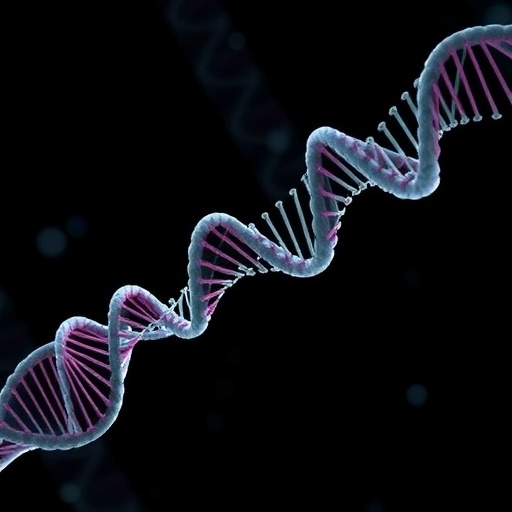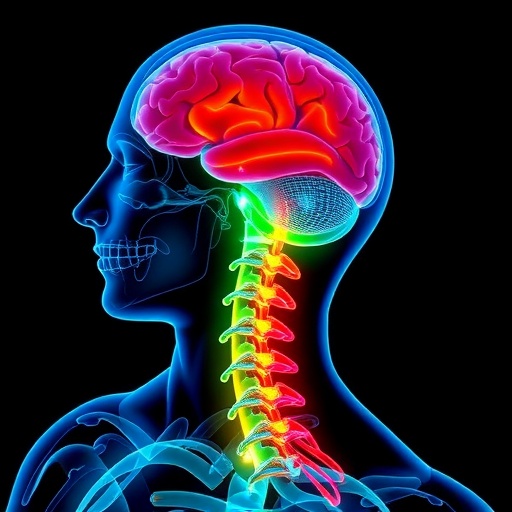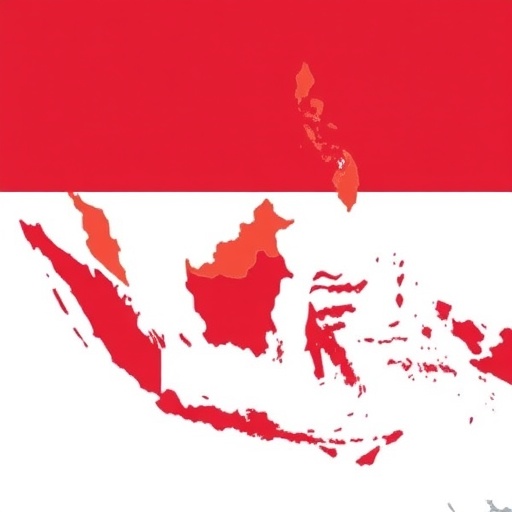In an era where forensic genetics is not only a critical tool for criminal investigation but also a window into human diversity, a groundbreaking study has emerged from West Bengal, India. The research, conducted by Chakraborti, Sil, Bhuiya, and colleagues, delves into the genetic fabric of the people in this region, focusing on 20 CODIS STR loci. These loci, short tandem repeats (STRs) used by the Combined DNA Index System (CODIS), have become the gold standard for forensic identification worldwide. This study sheds new light on the genetic diversity within this population, offering insights with profound implications for forensic science and population genetics alike.
The heart of forensic DNA profiling lies in the analysis of STR markers—specific regions of the genome where short sequences of DNA are repeated multiple times. The number of repeats can vary greatly between individuals, making these regions invaluable for identity verification. CODIS, developed by the FBI, relies on a standardized set of STR loci to create a DNA profile that can me matched across databases. This system’s efficiency and accuracy hinge on the population-specific frequency data of these loci, underlining the importance of comprehensive genetic diversity studies such as this one in West Bengal.
West Bengal, located in eastern India, is home to one of the most culturally and ethnically diverse populations in the subcontinent. The region’s complex demographic history, shaped by waves of migration, trade, and conquests, has produced a rich tapestry of genetic lineages. Yet, despite its demographic complexity, detailed forensic genetic data from West Bengal has been scarce. This study fills a crucial gap by providing the first extensive analysis of 20 CODIS STR loci in the local population, thereby enhancing the forensic database necessary for precise identification and kinship analysis.
.adsslot_8ekfHZd7YG{ width:728px !important; height:90px !important; }
@media (max-width:1199px) { .adsslot_8ekfHZd7YG{ width:468px !important; height:60px !important; } }
@media (max-width:767px) { .adsslot_8ekfHZd7YG{ width:320px !important; height:50px !important; } }
ADVERTISEMENT
The methodology employed in this investigation reflects the highest standards in forensic genetics. The researchers collected DNA samples from a representative cohort, ensuring demographic diversity to capture the population’s genetic heterogeneity effectively. Utilizing advanced PCR amplification and capillary electrophoresis, they analyzed the 20 STR loci to determine allele frequencies, heterozygosity levels, and various forensic parameters, including power of discrimination and probability of exclusion. These metrics illuminate how suitable these markers are for individual identification in this population.
One of the study’s standout findings pertains to the allele distribution across the 20 loci, which revealed notable heterogeneity. This variation underscores the genetic complexity within West Bengal’s population, highlighting that each locus contributes differently to the overall discriminative power. The high polymorphism observed at key STR sites suggests that the standard CODIS loci provide robust forensic tools for this group, with significant implications for law enforcement agencies working in the region.
The importance of calculating population-specific allele frequencies cannot be overstated in forensic applications. If global or external population data are applied indiscriminately, the results may be misleading, potentially resulting in wrongful inclusions or exclusions in forensic casework. This research establishes the first such database for West Bengal, enabling precise statistical calculations tailored to this unique population. The enhanced accuracy in match probabilities that derives from this work will bolster the reliability of forensic evidence admissible in courts.
Beyond forensic applications, this research offers intriguing avenues for anthropological and evolutionary investigations. The genetic profiles uncovered here can unravel historical migration routes and population admixture events that have shaped West Bengal’s demographics. By comparing these allelic patterns with surrounding populations, scientists can reconstruct intricate narratives of human movement and interaction in South Asia, contributing to a more holistic understanding of the region’s genetic landscape.
Moreover, the study’s technical rigor sets a new standard for future population genetics research in India. The comprehensive approach, combining high-resolution genotyping and robust statistical analyses, serves as a blueprint for similar studies aiming to capture genetic diversity in other understudied regions of the country. This is particularly valuable given India’s immense ethnic and regional heterogeneity, underscoring a national imperative for refined forensic databases.
This research also touches on ethical considerations surrounding forensic genetics. The collection and use of genetic information must be balanced with respect for individual privacy and informed consent. The study team follows stringent ethical protocols, and the creation of population-specific databases serves not only scientific but also societal interests by improving the justice system’s fairness and accuracy.
From a legal perspective, the establishment of a reliable regional STR allele frequency database has profound ramifications for forensic case resolution. Investigations involving missing persons, paternity disputes, and criminal identifications in West Bengal can now benefit from stronger scientific underpinning. This work reinforces the integrity of forensic DNA evidence, making it less susceptible to challenges regarding statistical validity.
The implications of this work extend beyond national boundaries. As forensic science evolves towards global standardization, having region-specific datasets enables better cross-border collaboration and database interoperability. This study adds a critical dataset to the global forensic community, enhancing the precision of comparative analyses in both criminal and anthropological genetics.
Technologically, the application of cutting-edge genotyping methods has allowed for the differentiation of complex alleles and stutter artifacts, common challenges in STR analysis. The research team’s methodological advancements also reduce the risk of genotyping errors, which are crucial for the confident reporting of forensic results. This will inspire future improvements in laboratory protocols and statistical software used in forensic genetics.
In sum, this remarkable research enriches the understanding of human genetics in West Bengal, merging cutting-edge forensic methodologies with profound population insights. It stands as a testament to the indispensable role that regional studies play in enhancing global forensic and anthropological knowledge. For forensic scientists, this work is a beacon illuminating how localized data can drive global standards forward, galvanizing efforts to refine the science of human identification.
As forensic genetics continues to expand its reach into both science and society, studies like this one demonstrate the power of collaboration across disciplines and regions. The melding of genetic data with cultural and demographic understandings promises to redefine our approach not only to justice but also to our collective history. In an era fraught with challenges related to identity and truth, this pioneering research from West Bengal shines as a vital tool in the quest for accuracy and understanding.
Looking ahead, the incorporation of these findings into national forensic databases will likely catalyze broader research initiatives across India. By harmonizing these datasets with international efforts, the forensic science community moves closer to a future where genetic evidence is not only powerful but universally precise. This study’s legacy will be found in the countless lives affected by its applications—be it victims of crime, families seeking closure, or societies striving for justice.
In conclusion, the analysis of 20 CODIS STR loci in West Bengal’s population marks a pivotal advance in forensic genetics. It embodies the synthesis of technical excellence, ethical practice, and scientific curiosity. Going forward, the insights gleaned from this study promise to transform forensic profiling in India and serve as a model of genetic research’s potential to enrich human knowledge across disciplines and borders.
Subject of Research: Genetic diversity and forensic profiling of the West Bengal population using 20 CODIS STR loci.
Article Title: Genetic diversity and forensic profiling: analysis of 20 CODIS STR Loci in the population of West Bengal, India.
Article References:
Chakraborti, S., Sil, B., Bhuiya, S. et al. Genetic diversity and forensic profiling: analysis of 20 CODIS STR Loci in the population of West Bengal, India. Int J Legal Med (2025). https://doi.org/10.1007/s00414-025-03524-z
Image Credits: AI Generated
Tags: CODIS STR loci analysisDNA profiling techniquesforensic genetics applicationsforensic identification standardsforensic science advancementsgenetic diversity in West Bengalgenetic studies in Indian populationshuman diversity in Indiaimplications of genetic diversitypopulation genetics insightsshort tandem repeats in forensicsSTR markers in criminal investigations





